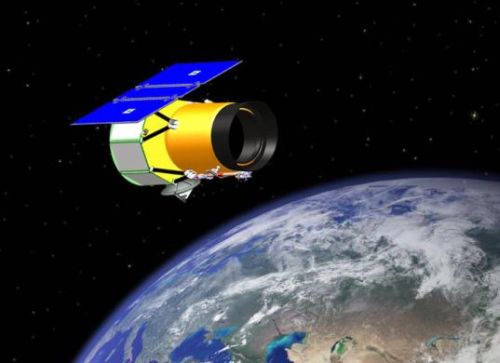NASA isn't blowing their own horn very loudly on this one, so allow me to instead. This is pretty huge, and a wonderful paradigm shift for satellite astronomy. The NASA WISE telescope has completed it's wide-field survey of the heavens. And now the data it has obtained is available to all astronomers, professional and amateur alike, online free of charge. What an incredible tool for the professional scientist, citizen scientist, hobbyist and random stargazer.
Here is the link to the instructions for accessing this powerful new tool:
http://wise.ssl.berkeley.edu/wise_image_service.html
==================================
NASA/JPL-- Astronomers across the globe can now sift through hundreds of millions of galaxies, stars and asteroids collected in the first bundle of data from NASA's Wide-field Infrared Survey Explorer (WISE) mission.
"Starting today thousands of new eyes will be looking at WISE data, and I expect many surprises," said Edward (Ned) Wright of UCLA, the mission's principal investigator.
WISE launched into space on Dec. 14, 2009 on a mission to map the entire sky in infrared light with greatly improved sensitivity and resolution over its predecessors. From its polar orbit, it scanned the skies about one-and-a-half times while collecting images taken at four infrared wavelengths of light. It took more than 2.7 million images over the course of its mission, capturing objects ranging from faraway galaxies to asteroids relatively close to Earth.
Like other infrared telescopes, WISE required coolant to chill its heat-sensitive detectors. When this frozen hydrogen coolant ran out, as expected, in early October, 2010, two of its four infrared channels were still operational. The survey was then extended for four more months, with the goal of finishing its sweep for asteroids and comets in the main asteroid belt of our solar system.
The mission's nearby discoveries included 20 comets, more than 33,000 asteroids between Mars and Jupiter, and 133 near-Earth objects (NEOs), which are those asteroids and comets with orbits that come within 28 million miles (about 45 million kilometers) of Earth's path around the sun. The satellite went into hibernation in early February of this year.
Today, WISE is taking the first major step in meeting its primary goal of delivering the mission's trove of objects to astronomers. Data from the first 57 percent of the sky surveyed is accessible through an online public archive. The complete survey, with improved data processing, will be made available in the spring of 2012. A predecessor to WISE, the Infrared Astronomical Satellite, served a similar role about 25 years ago, and those data are still valuable to astronomers today. Likewise, the WISE legacy is expected to endure for decades.
"We are excited that the preliminary data contain millions of newfound objects," said Fengchuan Liu, the project manager for WISE at NASA's Jet Propulsion Laboratory, Pasadena, Calif. "But the mission is not yet over -- the real treasure is the final catalog available a year from now, which will have twice as many sources, covering the entire sky and reaching even deeper into the universe than today's release."
Astronomers will use WISE's infrared data to hunt for hidden oddities, and to study trends in large populations of known objects. Survey missions often result in the unexpected discoveries too, because they are looking everywhere in the sky rather than at known targets. Data from the mission are also critical for finding the best candidates for follow-up studies with other telescopes, including the European Space Agency's Herschel observatory, which has important NASA contributions.

No comments:
Post a Comment